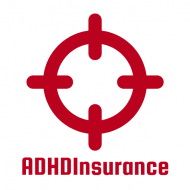Attention-Deficit/Hyperactivity Disorder (ADHD) is a neurodevelopmental disorder that affects millions of individuals globally, characterized by symptoms of inattention, hyperactivity, and impulsivity. While often discussed in broad terms, ADHD is not a one-size-fits-all diagnosis; rather, it manifests in varying degrees of severity. Understanding the five distinct levels of ADHD is crucial for proper diagnosis and effective treatment, as each level presents unique challenges and requirements for intervention.
This article aims to illuminate the five levels of ADHD, offering insights into how they are determined and their implications for those affected. By examining the severity of symptoms and their impact on daily functioning, we can better appreciate the nuanced nature of this disorder and the importance of tailored approaches to management.
Understanding the Five Distinct Levels of ADHD
ADHD is generally categorized into five distinct levels based on symptom severity and functional impairment: Level 1 (Mild), Level 2 (Moderate), Level 3 (Severe), Level 4 (Very Severe), and Level 5 (Extremely Severe). Each level reflects how significantly ADHD affects an individual’s life, including academic performance, social interactions, and occupational functioning. Level 1 indicates minimal impairment, where the individual may exhibit mild symptoms but can function adequately in most environments. Conversely, at Level 5, the symptoms are pervasive and debilitating, severely impacting the individual’s ability to carry out daily tasks.
Accurate assessment of these levels typically involves standardized rating scales and comprehensive evaluations by mental health professionals. Factors such as age, gender, and coexisting conditions can also influence the severity and presentation of symptoms. Understanding these levels is essential for clinicians in formulating effective treatment plans, as interventions may vary dramatically depending on the severity of the disorder.
An In-Depth Analysis of ADHD Severity and Its Implications
The implications of ADHD severity extend beyond the individual to families, schools, and workplaces. For those classified at Level 1 or 2, treatment options may include behavioral therapy and educational accommodations, enabling them to manage symptoms effectively with minimal disruption to their daily lives. However, as the levels increase, particularly at Levels 3 through 5, interventions often require more intensive strategies, including medication, specialized educational programs, and robust support systems. This escalated response is vital for mitigating the adverse effects associated with severe ADHD, such as academic failure, social isolation, and increased risk of comorbid mental health disorders.
Moreover, understanding the severity of ADHD is critical for fostering empathy and support within communities. Awareness of how ADHD can manifest differently across individuals can lead to improved understanding and accommodation in educational and professional settings. As families and educators become more informed about the distinctions between the levels of ADHD, they can better advocate for the necessary resources and support, helping to ensure that all individuals with ADHD receive appropriate interventions tailored to their unique needs.
In conclusion, the five levels of ADHD highlight the complexity and variability of this disorder, emphasizing the necessity for precise diagnosis and individualized treatment plans. By comprehending the distinctions between these levels, we can enhance our approach to ADHD, ensuring that individuals receive the support they need to thrive. Whether through educational accommodations or more extensive therapeutic interventions, understanding the severity of ADHD is essential for fostering inclusive environments that recognize and address the challenges faced by those affected. The journey towards managing ADHD is multifaceted, requiring collaboration among healthcare providers, families, and communities to promote well-being and success for individuals at all levels.
Dr. Jonathon Preston is a respected mental health specialist dedicated to helping individuals overcome challenges. With advanced training in psychology and decades of experience in the mental health field.
